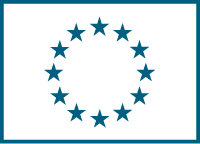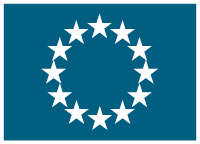Strategy to reduce waste, increase re-using and recycling, reduce incineration and storage, in a rural and urban area
(WASTE ON A DIET)
Date du début: 1 juil. 2012,
Date de fin: 30 juin 2016
PROJET
TERMINÉ
Background
Reduction in waste, the reuse and recycling of materials and less use of landfill are key aims of EU policy. This requires some innovative solutions. At the beginning of 2012, Grand Besançon became the first conurbation with over 50 000 inhabitants to adopt a âpay-as-you-throwâ scheme to finance waste treatment and encourage reduction of residual household waste. The city has installed radio frequency identification (RFID) chips on residual waste bins and aims that by 2014, residents will be charged according to quantity and weight sent for incineration.
However, 70% of the city's population lives in collective housing, where the cost of waste management is not billed directly to individual households. These areas have a high rate of turnover among residents as well as a significant social and cultural diversity, making traditional written communication tools ineffective. Production of residual household waste for incineration is highest in these households - providing the city with its greatest challenge and greatest opportunity for improvement.
Rural areas of the region have their own difficulties, particularly an increase in the flow of waste through the household waste recycling centres (HWRCs). There is urgent need to optimise the running of the centres to improve quality of sorting as well as to increase quantities recycled.
In 2009: residual household waste in the region was 217 kg/inhabitant/yr; waste recovery in the HWRCs was 38%; total waste intended for landfill was 12 000 tonnes; and household waste management costs were â¬75 per inhabitant.
Objectives
The project aims to deploy solutions to facilitate full implementation of the pay-as-you-throw scheme. It aims to address the particular challenges of collective housing and rural areas to reduce quantities of waste and increase local treatment and recycling of organic waste.
The project will establish a team of six people to assess waste management practices at the entrances of each collective housing residential block. They will investigate quantities of waste, standards of cleanliness and extent of poor waste practices. The team will suggest ways and tools by which the city council, landlords, waste collection and composting organisations can improve their interventions to have the most positive impact on household waste management practices.
The project will run âwaste preventionâ awareness campaigns for people living in collective housing. To overcome barriers of language, literacy and cultural differences, project staff will run practical workshops covering themes such as: shopping; preparing meals; redesigning clothes and furniture; and purchasing second-hand goods. The project will also seek to explain the pay-as-you-throw scheme and related charges.
Composting facilities will be developed and made available for three years so that every inhabitant of collective housing can compost their organic waste. Local solutions will be tailored to the number of residences, the available space and the engagement of local volunteers.
To optimise the HWRCs in rural areas, a controlled-access system will be established, thus limiting the number of users on a site at any one time. This will allow operatives to improve supervision of disposal and advice to users, thereby limiting the sorting mistakes that hinder recycling.
A dismantling centre for bulky objects will be established to deal with waste from the whole network of sorting centres and limit the portion landfilled. Wood, metal and plastic parts can be sorted and where possible recycled and reused or otherwise valorised.
Expected results:
Improved management, sorting and disposal of household waste in collective housing;
A reduction in residual household waste of 150 kg/inhabitant/year to 35 000 metric tonnes in 2015, a drop of 25% in five years;
A 55% waste recovery rate (for recycling and composting) at HWRCs â an increase of 17 percentage points in five years;
The amount of waste from Besançon going to landfill to be halved within five years; and
Cost increases to be limited to less than â¬15 per inhabitant â keeping total waste management costs under â¬90 per inhabitant.




